

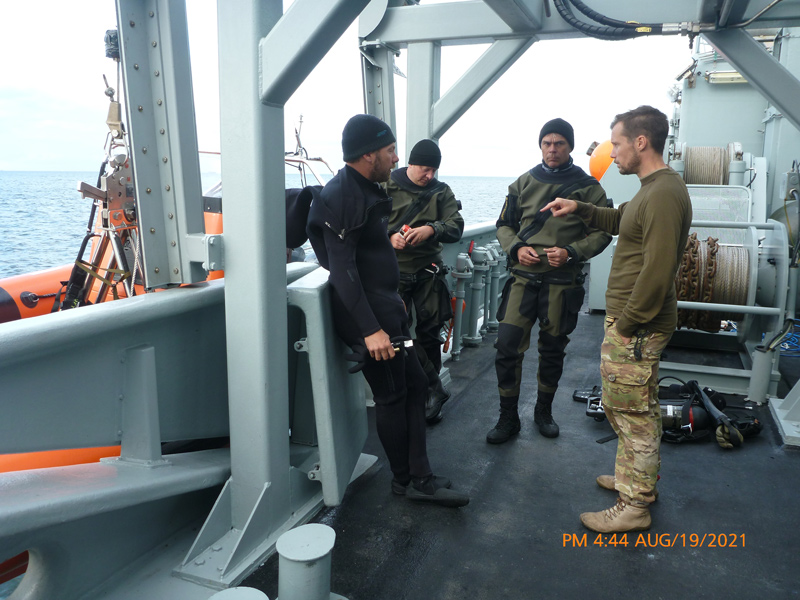
Identifying sunken planes
Photos courtesy of Dan Davis and Matthew Breece January 27, 2022
UD and Project Recover work with the Danish Royal Navy to identify two U.S. bombers from WWII
On June 20, 1944, a collision occurred between two B-24 bombers that were part of the U.S. 565th Bomb Squadron and were headed to strike targets in Germany. Between the two planes, a total of 21 Airmen were involved in the accident, which occurred near the island of Langeland in Denmark.
In early August 2021, a joint effort between the University of Delaware, Project Recover, the Royal Danish Navy and the Defense POW/MIA Accounting Agency (DPAA), led to an underwater survey of two areas where the B-24s went down in an effort to account for those missing Airmen.
Project Recover is a team of accomplished scientists, historians, and military veterans who search the ocean for and recover the remains of the more than 80,000 Americans missing in action since World War II, delivering closure, solace, and kinship to MIA families who’ve gone generations without answers. Individuals from the University of Delaware and Scripps Institution of Oceanography are partners and members of this team.
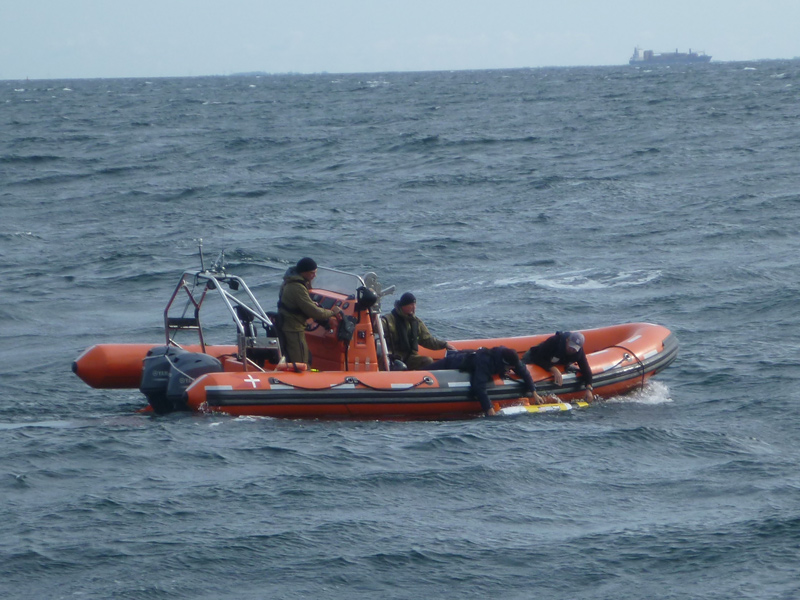
Those involved in the search from UD and Project Recover included Mark Moline, Director of the School of Marine Science and Policy (SMSP) in UD’s College of Earth, Ocean and Environment and a co-founder of Project Recover; Matthew Breece, a research scientist with UD and Project Recover; Dan Davis, lead archeologist on the project; Colin Colbourn, a UD post-doctoral researcher and a historian for Project Recover; and Erik White, a senior research engineer at UD.
All of those involved worked with the Royal Danish Navy and the Navy Fleet’s dive unit to investigate both crash sites.
Moline said that working on these projects always brings mixed emotions, as on the one hand, there is the joy of finding the sites, which presents technical challenges, but there is also a solemnity in bringing closure to the families of the deceased.
“I’ve been involved with a number of these projects and finding these sites. From a technical standpoint, it’s literally a needle in a haystack, and it’s a hard problem,” said Moline. “You feel some satisfaction and elation for finding these sites. But then there’s also reflection on what the site represents, and it’s a mix of emotions.”
Surveying the crash site
Breece, who completed his doctorate and then postdoctoral work at UD in SMSP, spent time investigating the site using REMUS-100 autonomous underwater vehicles (AUVs). Breece used the AUVs’ side-scan sonar to survey the known site of one of the planes — which had been found previously with local divers — and then also used it to look for the other plane, the site of which had not been identified.
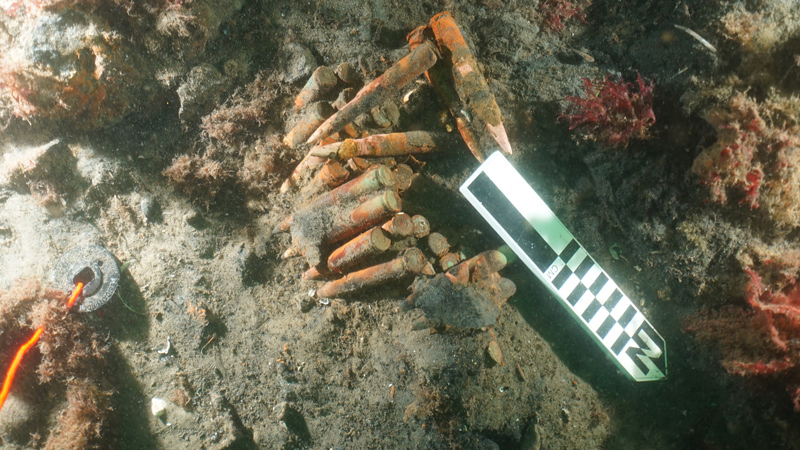
Breece and fellow researchers used two REMUS AUVs that were deployed for six to eight hours at a time, doing what is known as ‘mowing the lawn,’ scanning an underwater area moving back and forth in a grid pattern.
The AUVs allow the research team to scan the seafloor using high-resolution imagery — looking at images up to a few centimeters’ resolution — and Breece explained that the first thing they try to do is determine if a feature is geological or man-made.
“Hard lines, sharp angles, things like wiring, and things that stand out from the bottom of the seafloor give the man-made objects away over the natural, geological features,” said Breece. “With the side-scan sonar data, you can do measurements, see how far off the bottom it is, how wide, how long different objects are. But to really get an idea of what it is, you have to get your eyes and your hands on it in person and so that’s why we get in the water and go diving.”
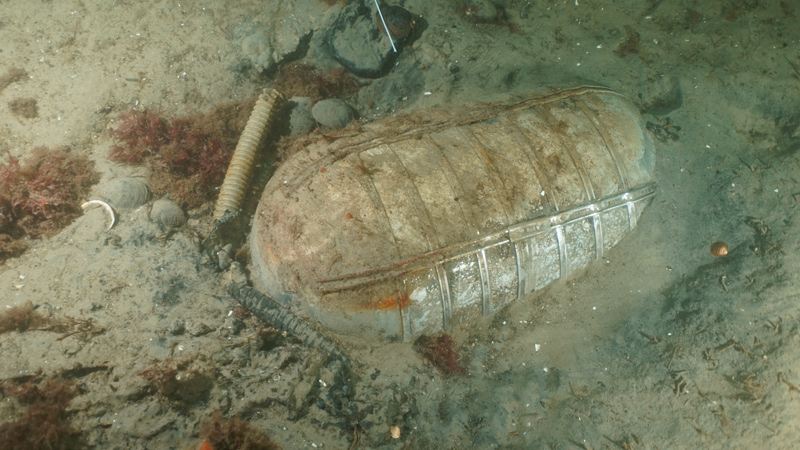
For this dive, there was an added challenge as both planes had bombs onboard when they collided. Most of the explosive parts of the 500-pound bombs had been identified and moved off site to be detonated, but with some ordinance still unaccounted for, the Royal Danish Navy wanted to be on-hand to help neutralize the threat should the team come across the explosives.
An explosive ordnance diver from the Royal Danish Navy was on hand with the Project Recover team while they ran the REMUS AUVs from a boat chartered out of a local dive shop to conduct the first part of their survey. The second part of the survey was done on board the HMS Søløven, a vessel in the Royal Danish Navy.
While the team was able to successfully identify one of the planes involved in the crash, they were unable to locate the second. However, because of their efforts in searching such a large area of the sea, any possible future efforts to find the plane will have a good jumping off point when starting their search.
Danish Navy recognized
To honor their contributions to the search, the DPAA and the U.S. State Department recognized members of the Royal Danish Navy, specifically presenting awards and certificates of appreciation to the captain and crew of the HMS Søløven, and divers with the Danish Navy Fleet Diving Unit.
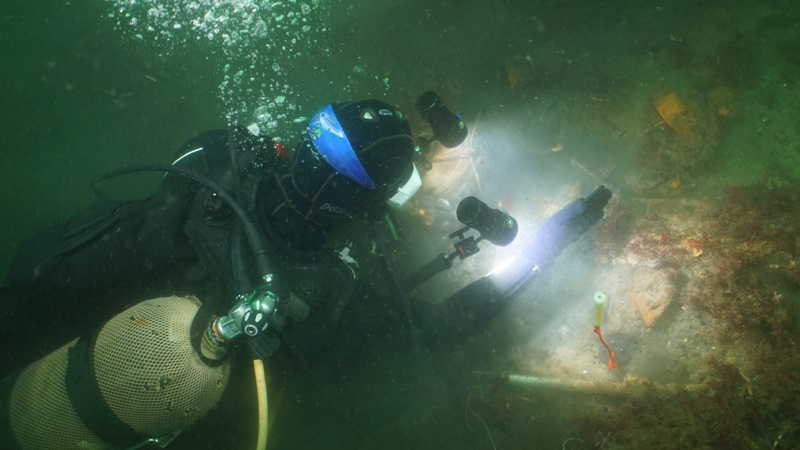
Breece said that he was impressed with how enthusiastic members from the Royal Danish Navy were when it came to helping investigate the sites.
“They appreciate our respect for the fallen military members and what we’re doing to bring our guys home,” said Breece. “That aspect was really heart-warming. They threw all the assets that they could spare to help us. There were a dozen or more people on the ship, and everybody was devoted to our mission. They were willing to dive as much as they could. It didn’t matter what the weather conditions were, they were game. They wanted to jump in the water and help us out.”
Moline echoed these sentiments, saying that, like most of the host nations Project Recover works with on these projects, the Royal Danish Navy was a great partner.
“They have a knowledge of the mission that we’re trying to do, and they’re really invested in that,” said Moline. “They honor our tradition of trying to identify and return lost service members, and that’s the case with most countries regardless of whether they actually practice that or not. They honor our tradition of doing that.”
To What Remains
Project Recover was the subject of a feature-length documentary, To What Remains, released in the fall of 2021. After showing in select theaters around the country during December, virtual screenings were organized in January, and the film is expected to be available through online streaming, DVD and Blu-Ray in early spring. Learn more about the movie and how to watch it at www.towhatremains.org.
Contact Us
Have a UDaily story idea?
Contact us at ocm@udel.edu
Members of the press
Contact us at 302-831-NEWS or visit the Media Relations website

